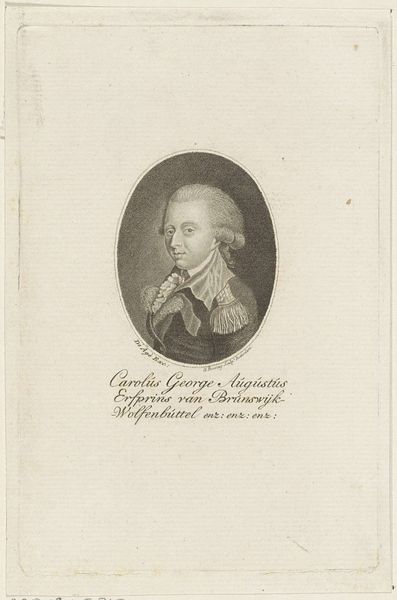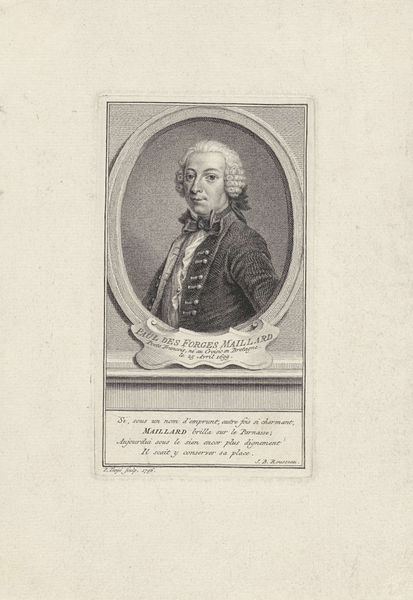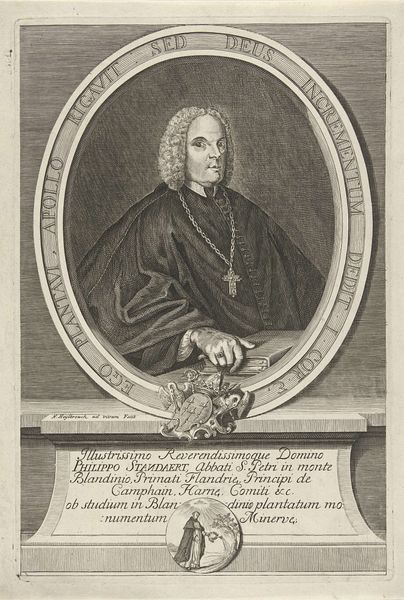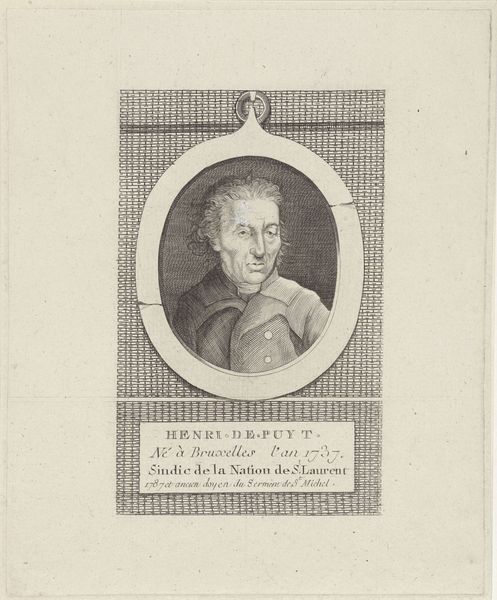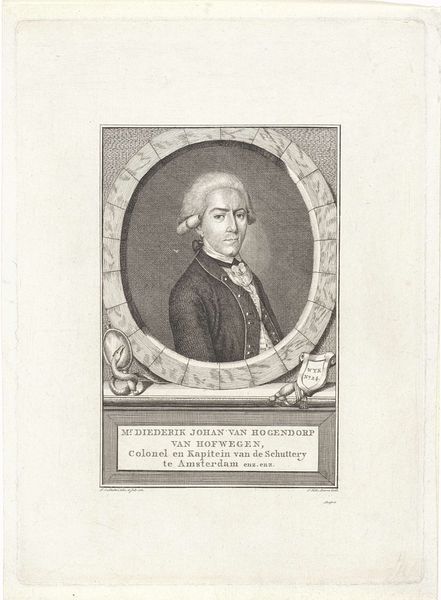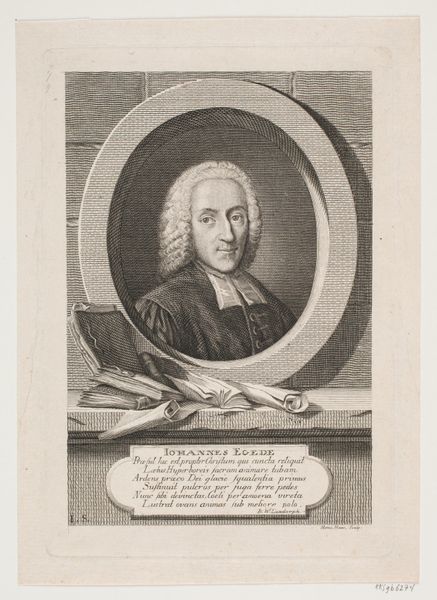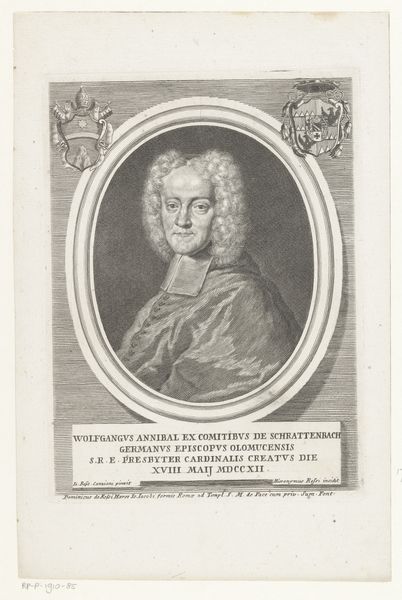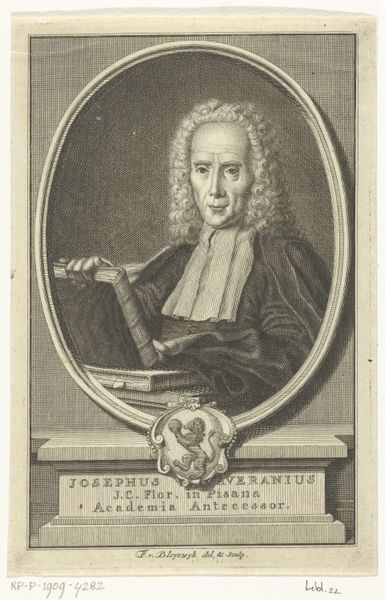
Dimensions: height 217 mm, width 146 mm
Copyright: Rijks Museum: Open Domain
Curator: This is an 18th-century engraving, a print entitled "Portret van Girolamo Tiraboschi." It was crafted by Ignazio Colombo and embodies the Neoclassical style. Editor: My first thought? Austere. Almost feels like I'm staring at a judge, or someone equally imposing, but, goodness, what a beautifully rendered study in blacks and whites. Curator: Precisely. The piece adheres to Neoclassical principles by prioritizing line and form, while containing a measured, intellectual feeling. The artist leverages the graphic medium to convey structure through contrasting tonalities. The very texture and cross-hatching lend a feeling of cool distance. Editor: He does look very... distant. Almost trapped in amber! Is it just me, or does that single feather seem to promise a hint of movement in all that stillness? Curator: The feather could be read symbolically as Tiraboschi’s vocation as a writer or perhaps a scholar—we do see his name along with a dedication. The tight oval frame and close crop function to create intimacy, yet the sitter's expression betrays emotional restraint. Editor: Which is classic of the Neoclassical portrait, right? They wanted to show importance through an appearance of serious contemplation. A sort of no-nonsense intelligence. Curator: To a large extent, yes, this artwork aims to memorialize the sitter’s status, intellectual aptitude, or position within a societal hierarchy. Observe, too, the relative simplicity of attire compared to the florid fashions of the Rococo period which came before, which can be read as evidence of moral integrity. Editor: I’d be intimidated if I were sitting opposite him, sketching! Now that you explain how everything is meant to come across... It’s remarkable how an absence can say so much! The absence of flourish tells you what _he_ valued. And what was thought proper to express. Fascinating! Curator: An eloquent summary. Indeed, the visual sparseness and deliberate composure encourage contemplation, leaving the viewer space to project and discern meaning beyond the immediately apparent. Editor: Art history... Always a revealing journey, isn't it? It teaches you so much more than about what meets the eye in any given piece of art. It's like holding up a mirror to history!
Comments
No comments
Be the first to comment and join the conversation on the ultimate creative platform.
